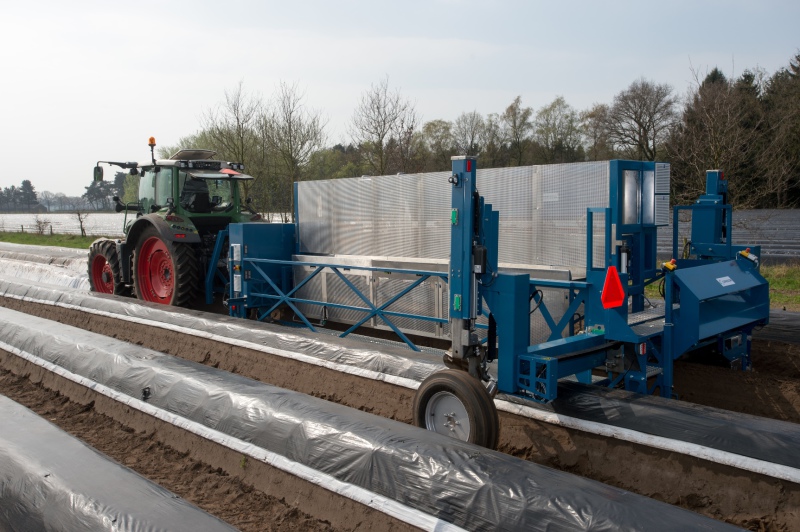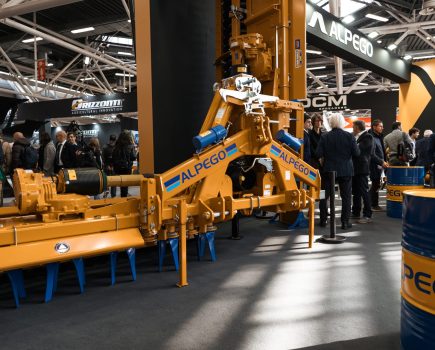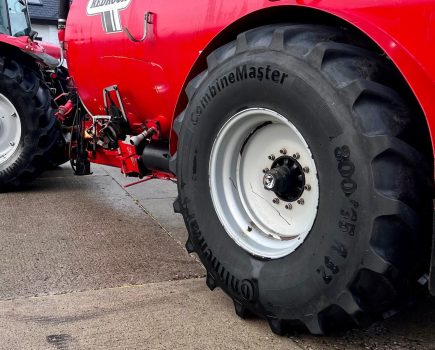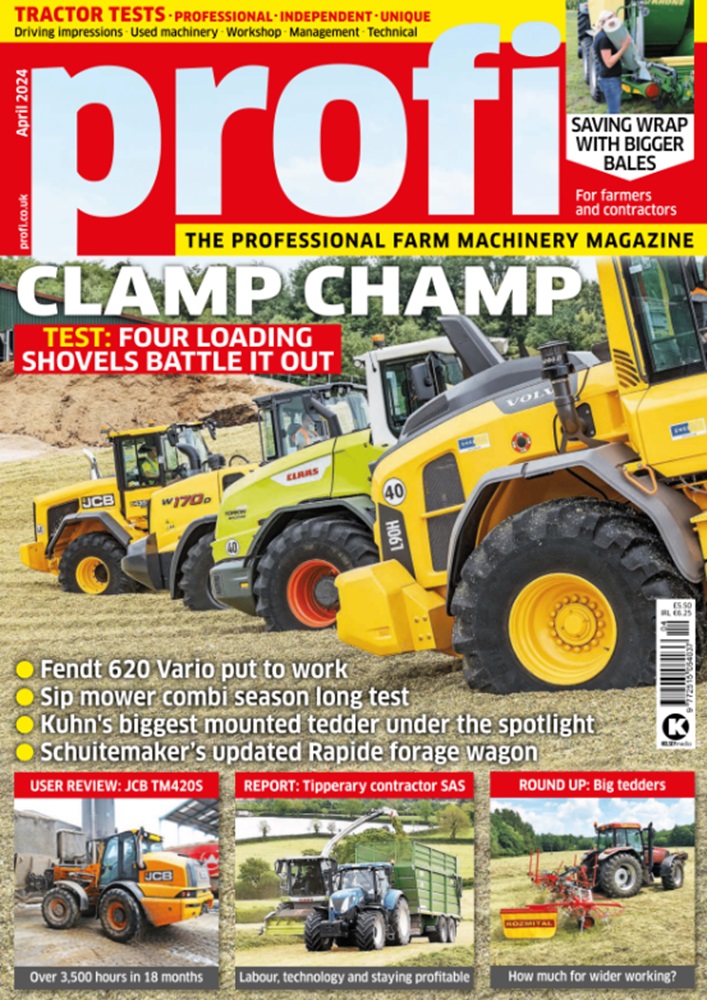White asparagus, or ‘white gold’ as it is often called, is a big crop in mainland Europe. Generating estimated revenues of €800 million, around 10% of this comes from the Netherlands, and it is here where the prototype of the world’s first automatic asparagus harvester has been developed.
Asparagus is an expensive crop to harvest. Grown in plastic-covered ridges, the wraps come off briefly during harvest, when individual spears are cut at the base with a knife. Labour costs to do this are rising, and growers struggle to find seasonal staff for the short season, which generally runs from the end of April to the third week of June. There are a number of mechanical harvesting solutions, but Dutch firm Ceresco is believed to be the first to develop a machine that automatically detects and harvests asparagus spears that have reached the required length.
The result of several years of R+D, six Dutch and German growers are closely involved with the development of the one-row prototype. A number of different detection technologies were trialled, including radar and resistance sensors, but moisture sensors were found to provide the best results. Operating up to 5cm from each side of the ridge, the depth of the sensors can be varied from 3 to 10cm. This means that during periods when the demand is high the depth can be lowered to find more spears, and the system detects asparagus before the tips emerge from the soil and discolour.
The sensors withdraw from the ridge when a spear is found, and the precise location is transmitted to the robotic arm. This pushes four steel rods into the top of the ridge to encase the spear, after which a blade slices it at the base, extracts it, and lays it in a container. The robotic arm remains stationary during the cutting process. Once a spear has been extracted, the robot arm moves forward, and the machine’s final task is to repair the ridge.
Cerescon plans to make a small number of commercial three-row machines for next season. Each one is expected to cost in the region of €500,000 to €600,000, which the firm reckons can be recouped in a little over three seasons.
Capable of covering 1ha/hr, and suitable for growers working with 40-45ha, Cerescon reckons the three-row machine will replace 60-75 pairs of hands, reducing harvesting costs by 50%. The firm reckons there is a potential to sell 600 machines globally, and has ambitious goals to double sales each year to a maximum of 60-65 units a year by 2023.






